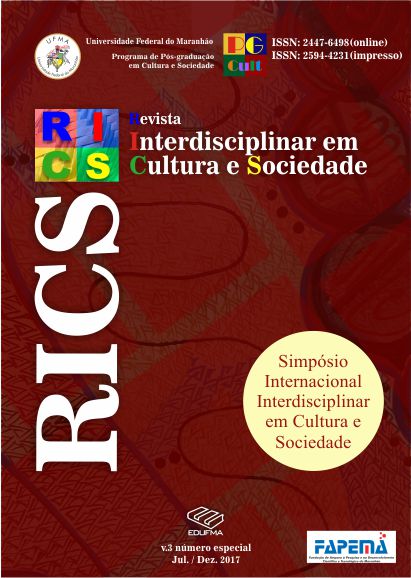UM OLHAR SOBRE OS LIMITES DO CORPO HUMANO POR MEIO DE ESFINGE, DE COELHO NETO
Palavras-chave:
Coelho Neto. Ficção Científica Brasileira. Gênero. Belle Époque.Resumo
Por muito tempo, pensou-se que a Ficção Científica relacionava-se apenas aos países tecnologicamente desenvolvidos e, por isso, acreditava-se que o Brasil não se interessava pela produção do gênero. No início do século XX, a Belle Époque fez surgir o fascínio e a incerteza diante do desenvolvimento científico. Por isso, a produção desta época é envolta em misticismo, tal como em Esfinge, obra publicada em 1908, pelo maranhense Coelho Neto. Situada na cidade do Rio de Janeiro, a trama tem como personagem central o inglês James Marian, fruto de um experimento científico, fusão entre um corpo masculino e um feminino. O objetivo do trabalho é mostrar de que forma as discussões sobre o uso da ciência apresentam-se na obra, além dos conflitos de identidade do personagem, com base nos estudos de Roberto de Sousa Causo (2003), Mary Elizabeth Ginway (2010) e Bráulio Tavares (2003). Esta obra denota, assim, o sentimento da sociedade brasileira diante do progresso científico, no início do século XX, bem como seu impacto, no que tange aos limites biológicos, psicológicos e sociais.
Palavras-chave: Coelho Neto. Ficção Científica Brasileira. Gênero. Belle Époque.
A VIEW OVER THE BOUNDARIES OF HUMAN BODY THROUGH COELHO NETO’S ESFINGE
ABSTRACT: For a long time, it was thought that Science Fiction was only related to the technologically developed countries and, for this reason, it was believed that Brazil was not interested in the production of the genre. At the beginning of the twentieth century, the Belle Époque gave rise to fascination and uncertainty before scientific development. Therefore, the literary production this time is shrouded in mysticism, as in Esfinge, published in 1908, by Coelho Neto, writer from Maranhão. Placed in the city of Rio de Janeiro, the plot has, as central character, the Englishman James Marian, who was created by a scientific experiment, resulting in a fusion between a male and a female body. The objective of this paper is to show how discussions about the use of sciences are presented in the work, as well as the identity conflicts of the character, based on the studies of Roberto de Sousa Causo (2003), Mary Elizabeth Ginway (2010) and Bráulio Tavares (2003). Therefore, this work denotes the Brazilian society’s sense of scientific progress in the early twentieth century, as well as its impact, in terms of biological, psychological and social limits.
Keywords: Coelho Neto. Brazilian Science Fiction. Gender. Belle Époque.
Downloads
Downloads
Publicado
Como Citar
Edição
Seção
Licença
Direitos autorais da Revista Interdisciplinar em Cultura e Sociedade
Este obra está licenciado com uma Licença Creative Commons Atribuição 4.0 Internacional.


















